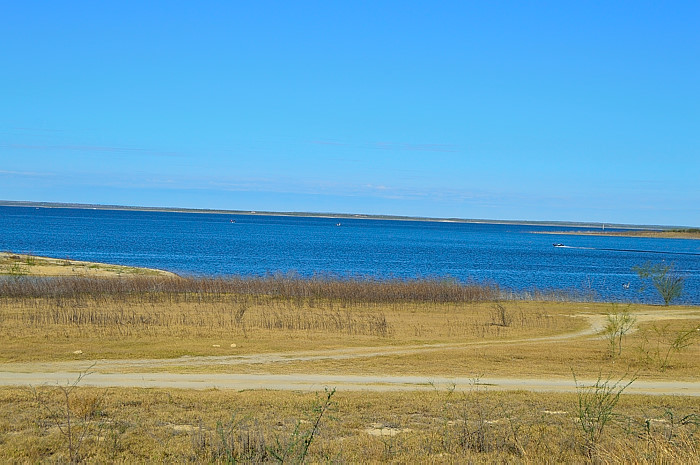Want to get away? Looking for winter warmth and a change of scenery? In Texas, all you have to do is head due south for 5 ½ hours. Yes, it’s a long drive but, unlike Maryland or Rhode Island, when it’s over you’ll still be in Texas! On the Mexican border, Falcon State Park is located between Nuevo Laredo and Hidalgo, Texas on the Rio Grande. While it is definitely a temperate climate, be careful what you wish for. When we visited in February 2017 the temperature reached a scorching 104 degrees while the wind sucked at the trees! It was as if the sky was full of swirling embers and the universe was upside down, with hell above. Understand that normal temperatures this time of year are in the 70’s. That day set a winter record but the park ranger was careful to point out the real issue, “Don’t come here in the middle of summer unless you’re on the water.”

“On the water” means Falcon Lake, formally the Falcon International Reservoir, more than 87,000 acres of Rio Grande water stretching for 28 miles behind the dam. In fact, the area of the lake varies from 87,000 acres at elevation 301.2 feet to 115,400 acres at the maximum elevation of 314.2 feet. It’s huge. It sprawls. We share it with Mexico. The dam was dedicated in October 1953 by Mexican President Adolfo Ruiz Cortines and President Dwight D. Eisenhower. The stated purpose of the reservoir is utilitarian: crop irrigation, water conservation, power generation and flood control. But for ordinary folks it’s the place to go for recreation and water sports when the summer sun hits like a religious conviction. It offers up some of the best largemouth bass and channel catfishing in Texas. As the jet skiers pass by, you can watch the sun make rainbows in the plumes of their tail spray.

Formed from the Rio Grande River, Falcon State Park serves as part of the border between the U.S. and Mexico. As a result, it is heavily patrolled by the U.S. Border Patrol. Nearby cities are NOT bilingual. While some citizens can manage a few words of English, most speak Spanish—period. The nearest town of any size is Roma, population 11,400. It has a historic and antiquated downtown established by the Spanish in 1765—quite beautiful. Located on the Central Flyway of migratory birds, Roma also is home to the World Birding Center at the bluffs. It’s a pleasant enough little town, but it’s also an immigration hot spot. The L.A. Times reported the town accounted for 41% of nationwide illegal border crossings for the year ended September 2018.

The birding here really is something of a special experience. Located at an important intersection of northern and southern flyways, it brings together not only the birds common to the southwest but also tropical birds. Especially popular species include the small green kingfisher and the varied bunting. Despite its name and the fact it draws birders from all over the globe, Falcon State Park has nothing to do with falcons. The lake is named after Maria Rita de la Garza Falcon (pronounced foul-cone), the wife of the founder for whom the town of Falcon was named. This proved to be an act of dedication as well as sacrificial—the town was eventually buried when the reservoir was filled.

A little farther down the highway is Rio Grande City, just 41 miles west of McAllen, Texas. I will tell you right now that the city holds the March record high for the United States at a blazing 108 degrees. It also is connected to Camargo, Tamaulipas via the Rio Grande City-Camargo International Bridge. It’s a border crossing. The culture is so Mexican there that even the local H.E.B.-Plus is decorated in garish colors, is overstocked with regional foods like nopales (cactus pads) and gringos stand out like escapees from Santa’s workshop. Merchants openly warned us to stay away from the border crossing, which we did. Given the temperatures, a gin and tonic sounded good. We scoured the city searching for a bottle of gin, a spirit apparently very low on the Hispanic palette. After pointing and grunting through three non-English speaking liquor stores we finally located a lonely, dusty bottle abandoned on a back shelf. From the size and selection of the stores we visited, I’m guessing most locals get their booze on the other side of the border.

Meanwhile, back at the state park, not much was happening. One morning during our stay, our park hosts led a birding expedition that was attended by approximately 20 people. In the group, only two of us were from Texas. Seeing as though these were seriously dedicated birders (the kind who get excited by different tail feather measurements), I left the group after an hour or so to pursue my own interests. There’s a lot more wildlife here than just birds. The area is home to mule deer, white-tails, pronghorn antelope, desert big-horn sheep and javelinas. Of course, your chance of actually spotting any of these during the day is nearly non-existent.

Nature trails are pretty much non-existent at Falcon. There are rutted roads which spider web their way to the water and beaches but they are not walking trails. The land is gently rolling, mostly mesquite and huisach trees with yucca and other cacti tossed in for color. There is one major trail that winds around the entirety of the park, just outside the paved roads but it is bland and unexciting—just like the land it is carved through. The park did have a rec (event) center, a butterfly garden and a wildlife (read, birds) viewing area, but otherwise that was about it.
Recreation for me was simple. My nights were spent marveling at the pale sky under a marbled gray moon crusted with the mild glitter of stars. I enjoyed the quiet and cool of the evening, surrounded by a shadowy expanse of desert. My days, like most all living things, were spent seeking shelter from the smashing sun. At one point, with our camper refrigerator struggling to keep us free from botulism and our air conditioner set at its coldest, we measured an inside temperature of 84 degrees.
I generally can’t lie worth crap. This brings me to the bottom line of Falcon State Park. In all this great expanse of water (with the possible exception of a few shore birds and a flock of mallards bobbing together in the lee of the fishing dock) the essence of this place is under the water. There is also redemption if you are a dedicated birder or you enjoy water toys. But if you’re not into fishing, boating or bird watching, this park is yellow, scrubby and about as stimulating as an old newspaper. Just saying.


